|
Our weekend trips |
|
|
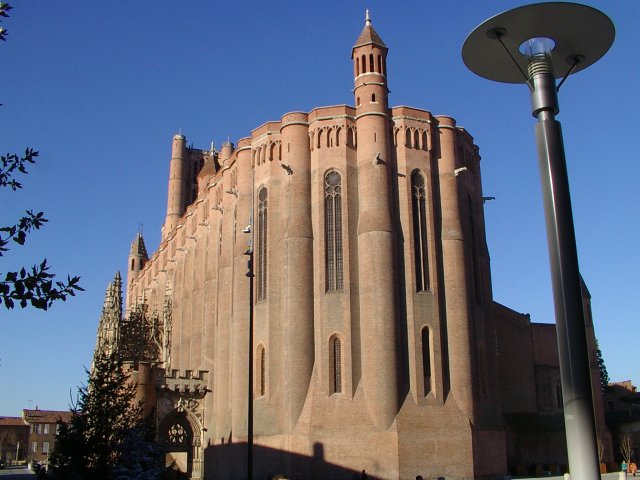
|
One Sunday in December we decided to leave Toulouse and all it's Christmas shoppers and we drove for about 40 minutes Northeast to visit Albi. The city is famous for its fortress-like built Gothic cathedral Sainte Cecile, reminding Albi of its violent religious past. The cathedral was started to build in 1282, shortly after the Cathar movement had been crushed. The construction of this cathedral lasted for about one century and the outside was deliberately built to impress and show power. The cathedral is sitting proudly on top of a hill and overlooking the river Tarn. The interior of the cathedral is a huge contrast to the plain outside: everything is richly decorated and reminds rather of a baroque church. We weren't able to take many pictures from inside because each time we stepped inside, there was either a mass or Christmas concert going on. The cathedral as well as the rest of the houses in Albi were built with bricks of reddish clay that was dug from the nearby river Tarn. |
|
However, Albi is not just worth a trip for the cathedral but also because it is the birthtown of the famous painter Henri de Toulouse-Lautrec who was born into an aristocratic family. The city of Albi devoted the Palais de la Berbie, a former archbishop's palace, to a museum showing 500 examples of the painter's pieces. |
|
Henri de Toulouse-Lautrec's (1864-1901) life was rather short and very intensly lived. As a teenager he had broken both legs in different accidents and since then, his legs stopped growing while the rest of his body continued the normal growth. As a result he needed to walk with a cane, which became later on his trademark. His unusual physique made it impossible for him to enjoy the typical aristocratic life of hunting and riding and he turned his interests to painting. He spent his early twenties studying painting in Paris where he socialized with other painters including Van Gogh. Later on, he abandonned the impressionism and concentrated on observing and painting the colorful nightlife of Paris. His favorite subjects were cabaret singers, cancan dancers from the Moulin Rouge and prostitutes. However, his appearance earned him many laughs and ridicule, a sorrow which he started to drown in alcohol. In 1899 heentered a detox clinic and even though his family was trying to keep him away from the alcohol, he still managed to keep drinking by hiding the alcohol in the shaft of his cane! He died in 1901 in his family's estate in Malrome. Below you will find some of the most famous pieces of his work. |
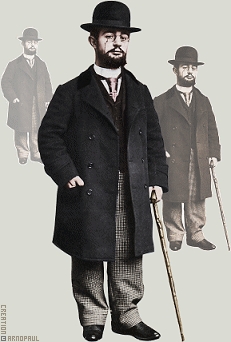
|
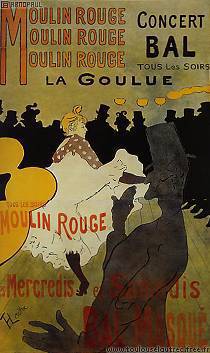
|
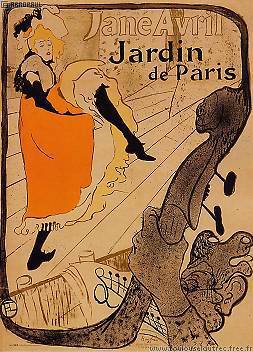
|
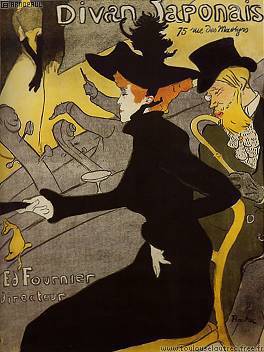
|
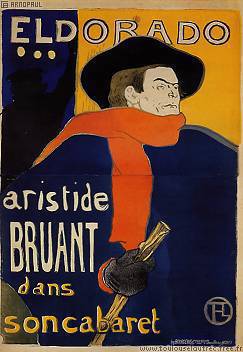
|
|
|
| For Christmas, it was a given that we would spend it in Switzerland with my family and friends instead of flying back home to California. Unfortunately, Neil and I were already both sick as we were sitting in the airplane heading for Zurich. The Holidays were pretty much spent by staying in bed, drinking tea and sleeping. But don't worry, we managed to join the dinner parties and the opening of the gifts!!! Neil was most impressed by the real candles that were on our Christmas tree! |
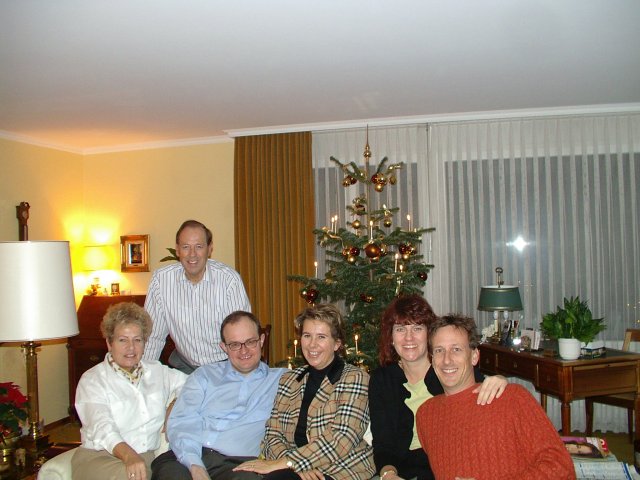
|
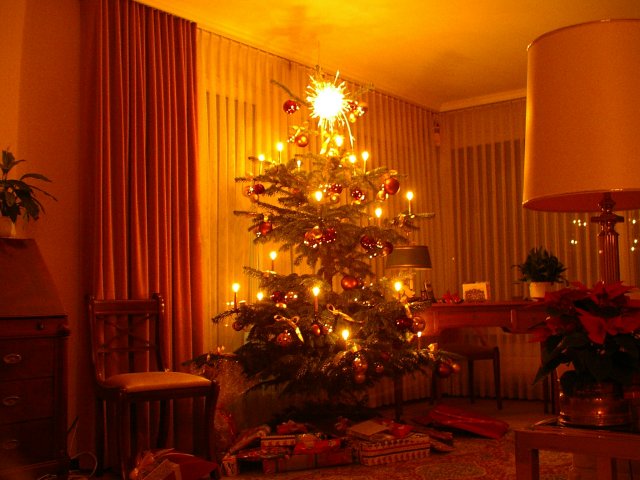
|
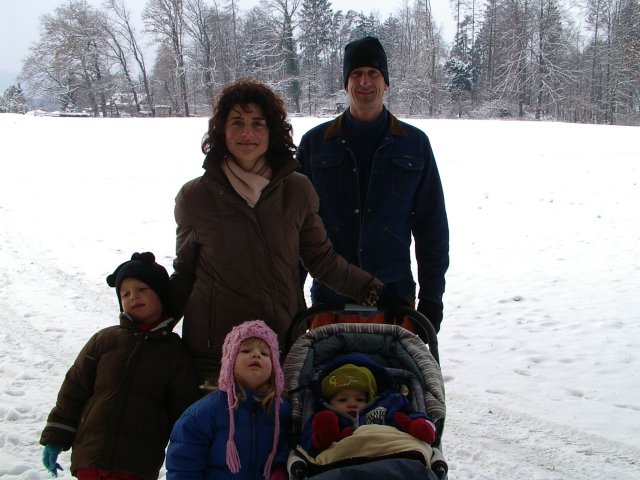
|
After Christmas, we also visited our friends Rene and Sonja and their kids and spent several days with them. Meanwhile, winter had really arrived and we were covered in snow! Needless to say we took the challenge and went sleighing! I haven't done that in so many years and it was a lot of fun with the kids. But the cold and the snowfall soon sent us in the next restaurant for a warm lunch! And one day was reserved to go to Zurich and watch the Christmas lights all over the city. Returning back to Toulouse from the snow felt like a nice break and the temperatures war a little more agreeable to us! |
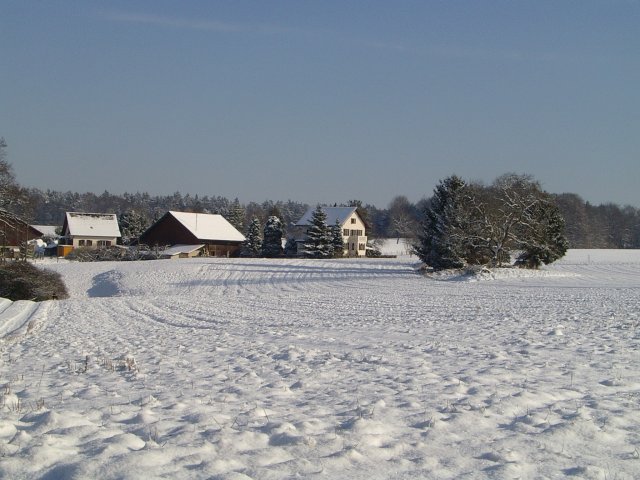
|
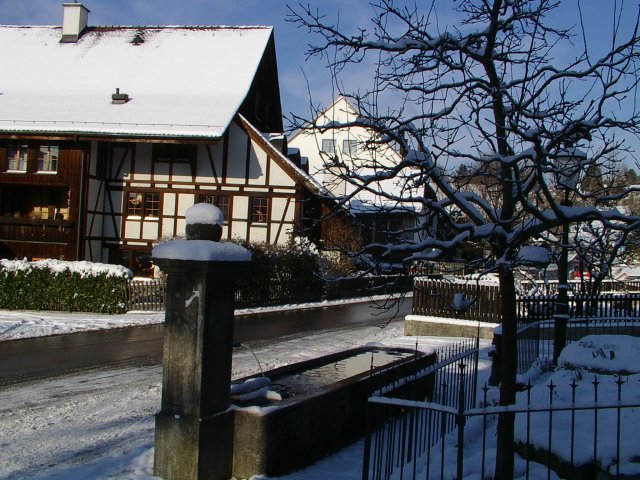
|
|
|
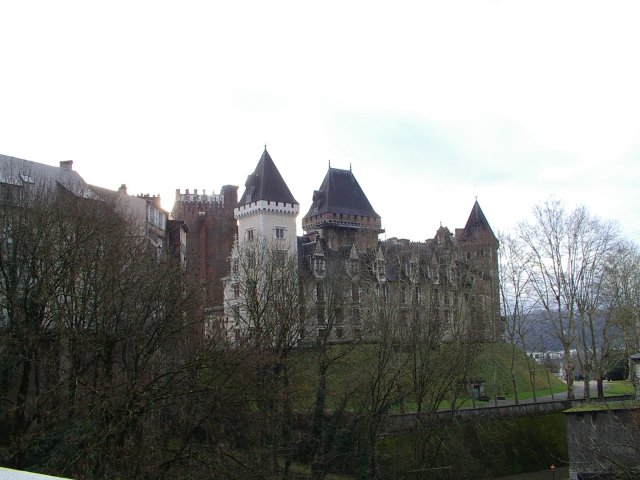
|
On January 2, we left Toulouse for another day trip and first headed to Pau, about 100 miles southwest of Toulouse. We reached the city after a 90 minute drive and found another gorgeous old village with a beautiful castle in the middle of town. As usual, the castle was originally built on a hill to function as a fortress. Later on, other houses had been built very closeley to that hill so that it almost seems that the houses are holding up the castle. As many other historic monuments, the castle in Pau has also suffered from the roughness of the French Revolution and has since been restored several times. However, the castles holds one of the most extensive collections of Gobelin tapestries and also the money tower is still in excellent condition. The castle is surrounded by beautiful gardens and the river Pau runs alongside the castle. |
|
Pau is also famous for its closeness to the Pyrenees. On a clear day, the boardwalk in Pau offers a breathtaking view to the mountains which are up to 10,000ft high. Several different places in the Pyrenees offer skiing in the winter and hiking in the summer. Unfortunately, we were not blessed to see the Pyrenees during our stay as it stayed very cloudy and overcast all day long. However, while looking through some sightseeing books, we got an impression of what the view would be like! |
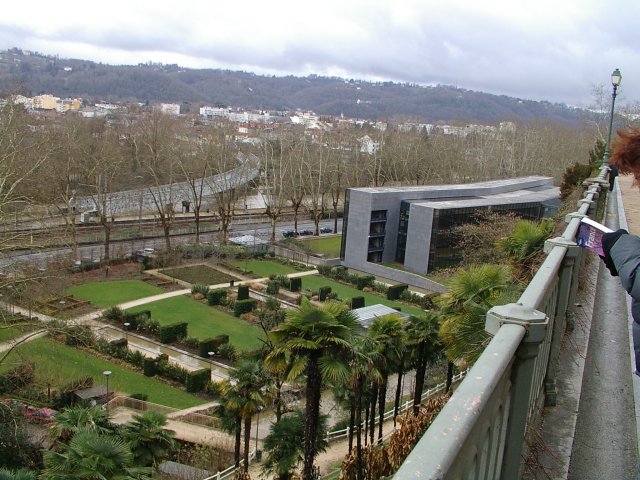
|
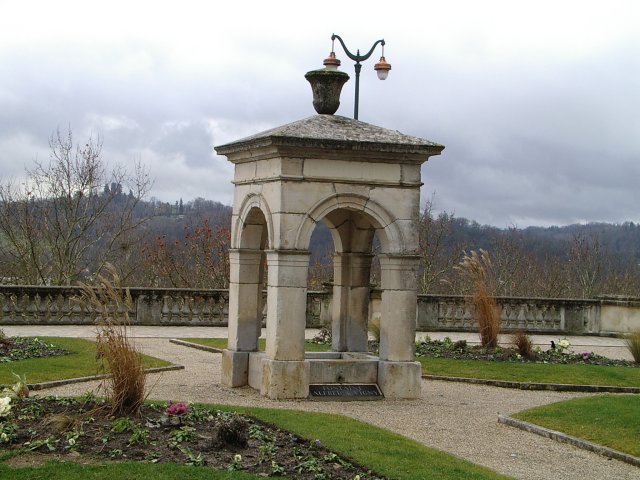
|
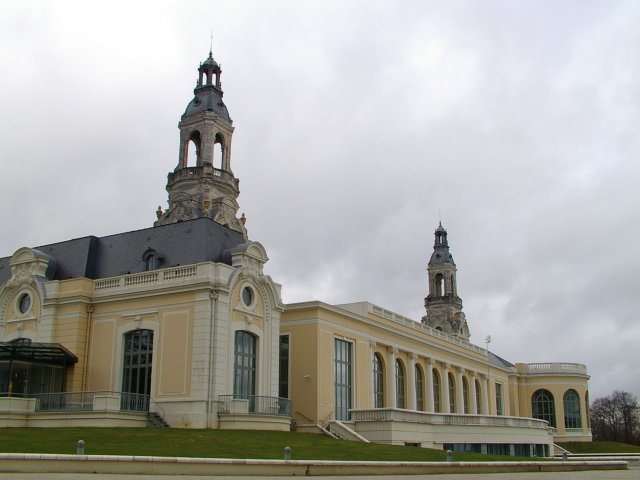
|
In the 19th century, Pau was a favorite wintering spot for wealthy English and Americans and all the mondane hotels as well as the casino (picture) are proof of that era. Needless to say that all the hotels are lined up to take advantage for the great view towards the Pyrenees and we can't blame anyone who would want to enjoy that sight! |
|
While we were passing along this boardwalk and hoping that the clouds would open up and show us the Pyrenees, we discovered the first Volleyball court in France!!! It looked quite lonely and in pretty bad shape; besides, it wasn't a sand court but rather built with concrete - it did not look too inviting to us! |
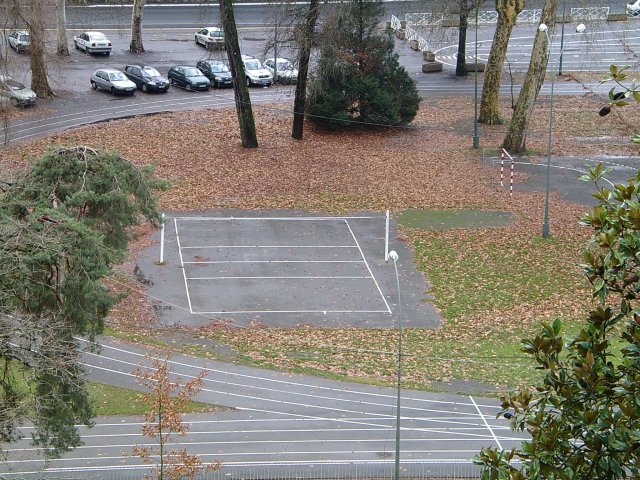
|
|
Another interesting fact we learnt that day: the French general Jean-Baptiste Bernadotte, born in Pau, had become King of Sweden and Norway in the 19th century! Our guide book describes the circumstances as follows: "Jean-Baptiste Bernadotte, an enthusiastic supporter of the French Revolution, was a distinguised general and diplomat serving both the Revolutionanry government and Napoleon and acquiring a reputation as a talented and humane administrator. Meanwhile, in Stockholm, the Swedish Riksdag (parliament) reckoned that the only way out of the country's dynastic and political crisis was to stick a foreigner on the throne. Admiring French military prowess, they turned to Bernadotte, electing him crown prince in 1810. Contrary to Napoleon's expectations, Bernadotte didnt' follow a pro-French foreign policy. Indeed, in the Battle of Leipzig (1813), Swedish troops under his command helped the allied army give Napoleon his first serious whipping. In 1818, Bernadotte became King Charles XIV. He died in office in 1844 but his line lives on: the present king of Sweden is the seventh ruler in the Benedotte dynasty." Considering that the present Swedish king is married to a German, their children are the result of a true European mixture! After another delicious lunch in a local restaurant, we headed on country roads to Lourdes, which was only 30 minutes away from Pau. Neil was initially not too keen to visit Lourdes, but I figured once we are so close to it we might as well stop by. |
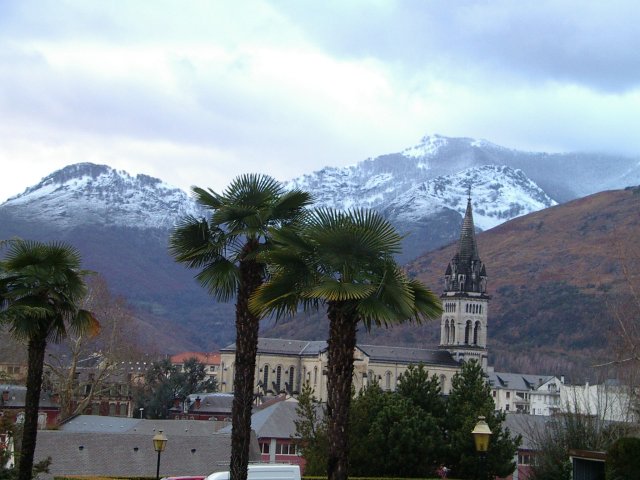
|
Arriving in Lourdes, we didn't really know what to expect, except that we knew that 5 million pilgrims were heading to this town every year. Us visiting Lourdes in January made it easy to avoid the masses of pilgrims and the even bigger masses of souvenir stores trying to make some money of the past miracles that had happened in Lourdes. Before I continue, I do have to point out that Neil and I both don't really believe in miracles and don't get carried away easily by some fairytale. However, reading the story of Sainte Bernadette's visions and seeing the places of worship left us quite impressed. |
| The story says that the 14-year old Bernadette Soubirous (1844-1879) saw the Virgin Mary in a series of 18 visions that came to her in a grotto in Lourdes. The Vatican later on confirmed these apparitions and declared Bernadette in 1933 as Sainte Bernadette. Considering that these apparitions started happening in 1858 and they happened to a teenage girl, we were wondering how she was able to make the world believe her story. One thing for sure, while the Virgin Mary was asking in one of the apparitions to have a church built in her honor, the people of Lourdes responded by building a huge sanctuary, partly due to the masses of pilgrims that have since stormed to Lourdes. Those sanctuaries are covering all the surroundings where the visions had happened to Bernadette. The area reminded us very |
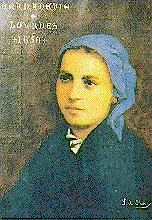
|
|
much of the Vatican and St. Peters Square in Rome, not just the style of the buildings but also sizewise! The grottos where the visions happened are along the river Pau and today, the grottos are laid out as a place of worship where the pilgrims are guided by so that they can touch the walls. Right next to the grottos are the pools, where the pilgrims have a chance to bath themselves in the quell water, hoping to cure their sufferings. However, miraculous cures become rarer and rarer; the last medically certifiable case took place in 1987 and was recognized by the church as a miracle after a 12-year long investigation! |
|
Around the grotto, the pilgrims have a chance to fill their tanks (which they bought in the souvenir shops!) with the grotto water, hoping to bring cure home for their loved ones. On top of the grotto are several churches and the crypt rounded up by the enourmous ramps leading down to the round place, the Esplanade of the Rosary, which has about the size of the St. Peter square in the Vatican. The whole area of the sanctuary is huge and we were quite amazed how well it was build into the town of Lourdes which only has a population of 15,000! The fact that it was getting dark and started to rain during our visit of Lourdes might have added to the whole miraculous atmosphere in this city. Once home, I wanted to find out more about Sainte Bernadette and her visions and found the following information on the 18 apparitions. Even though the main attraction in Lourdes are these sanctuaries, we don't want to miss mentioning the Chateau Fort, a gothic looking old castle sitting proudly on top of a rocky pinnacle and overlooking the town. Walking back to our car we were passing hundreds of closed souvenir shops; only maybe one out of then shops was open and are offering rather tacky items for the pilgrims. Also to mention is the fact that this small town offers over 350 hotels and 32,000 beds - this should give you an idea how much Lourdes can be taken over by pilgrims. |
|
|
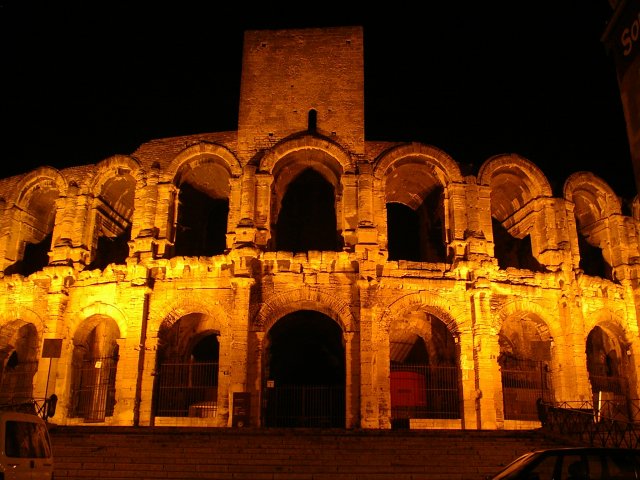
|
On Friday, January 6, I met Neil at his office and we left around 7pm heading East towards Arles. I had organized some sandwiches for dinner so that we were able to eat in the car while driving for about three and a half hours to our destination. Unfortunately, after about an hour of driving, a heavy storm hit us and we were only able to drive very slowly on the freeway. It was quite scary and the heavy rain lasted for about 45 minutes. Anyway, we made it safely to Arles and it is very special to arrive in a new city at night with all the lights on! We checked into our beautiful hotel that was located right next to the famous arena and then went for a night walk through Arles admiring the charm and beauty of this old town. |
|
Arles is also famous for art; several famous painters had lived and worked here and one of the most famous is Van Gogh. He had enjoyed the vivid life here and captured some of his impressions in his art. The city has created a walking tour showing all the spots that he had chosen for his paintings and a clipboard is showing the final art work which can be compared to the current view of the selected spot. I was quite amazed myself that some of his pieces were painted in Arles and not as I had expected in Paris. |
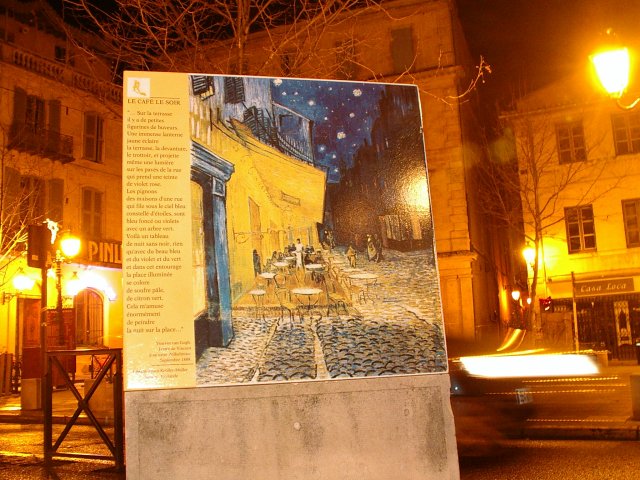
|
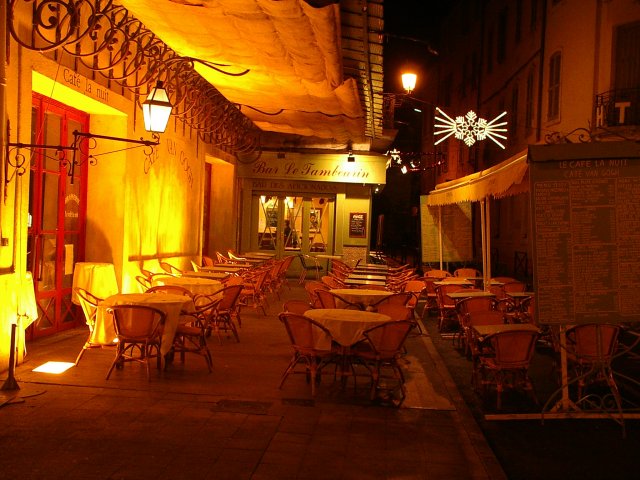
|
|
The next morning we discovered Arles by daylight and still agreed that this town had a lot of atmosphere and charm. We first strolled through the large farmer's market where some of the vendors came from far away to sell their products such as spices, herbs, olives, cheeses, meat, fruit, bread, but also flowers, soaps, linens, household goods and even living animals such as chickens and rabbits, etc.! |
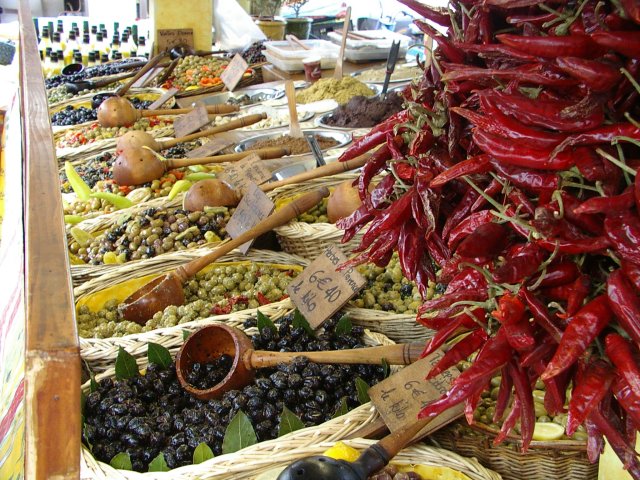
|
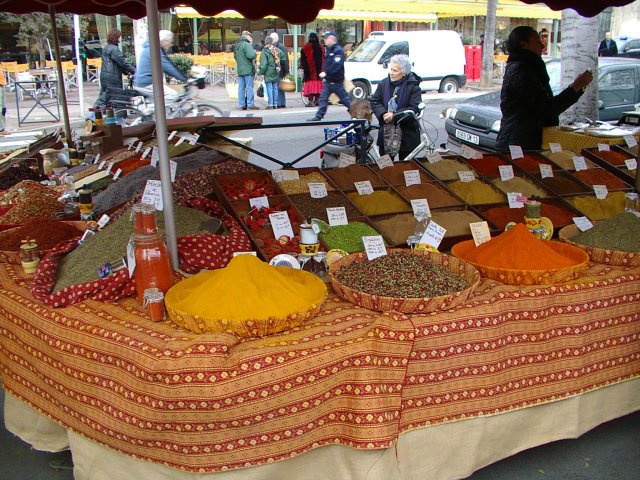
|
|
But Arles also offers many ancient sites that proof life in this city goes back to several thousand years: the arena (left) was built in the first or second century and could seat 24,000 spectators for gladiatorial events. During invasions in the Middle Age, the Arena served as a fortress and more than 200 houses and two chapels were built inside it! Today, the Arena is still being used for bull fighting events. The Roman Theatre (right) is another ancient relict that is also still used today for performances. It was built BC during the times of Augustus. The location chosen is magnificient because the theatre is situated on a small hill and it allows a wonderful view. |
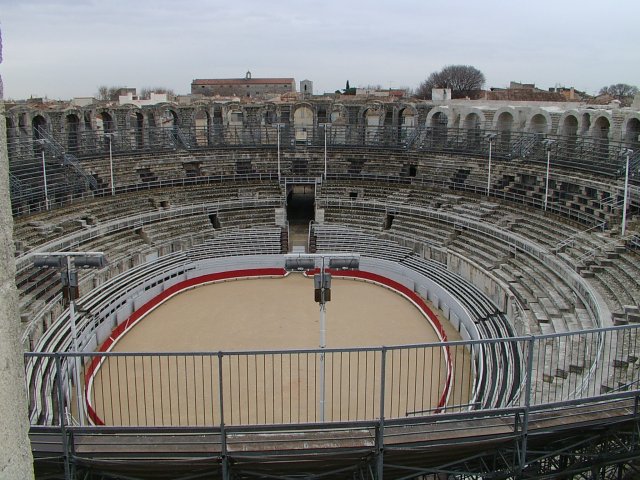
|
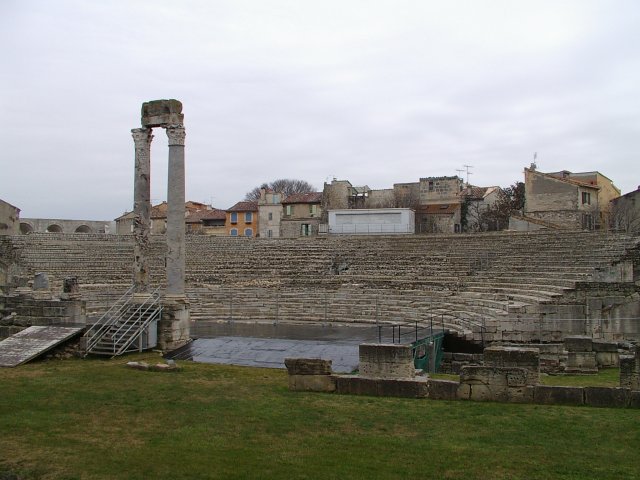
|
|
We had planned to visit the Camargue in the afternoon; however, the bad weather forced us to make some quick changes to our schedule and therefore we drove to Avignon instead. Avignon is a former Pope city and the huge palace is proof of that area. The Pope Palace was built during 30 years in the 14th century and looks like a fortress from the outside. The palace has been attached to the cathedral which had actually been built several centuries before. A large statue of the Virgin Mary is crowning the top of the bell tower. Next to the Palace is a large park sitting atop of a hill and overlooking the river Rhone. The park includes a pond with birds and a vineyard going back to the times of the Popes who loved the good life. |
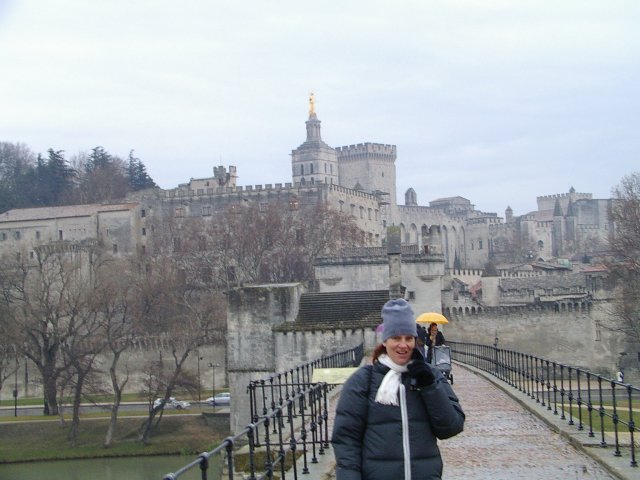
|
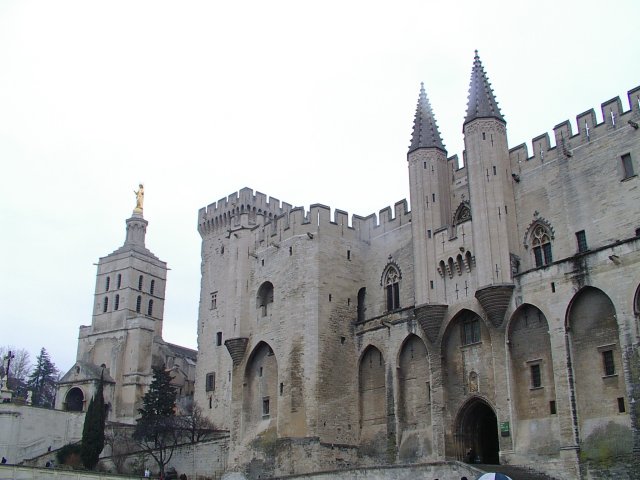
|
|
The old town of Avignon is built inside the city walls which are still in very good shape. A total of 13 gates allow to enter the city. But Avignon is also famous for one of the many bridges: the Pont St. Benezet or the bridge of Avignon as it is described in a famous local song. The bridge was built in the 12th century and the legend says that the sheppard Benezet had heard a voice telling him to build a bridge in Avignon. |
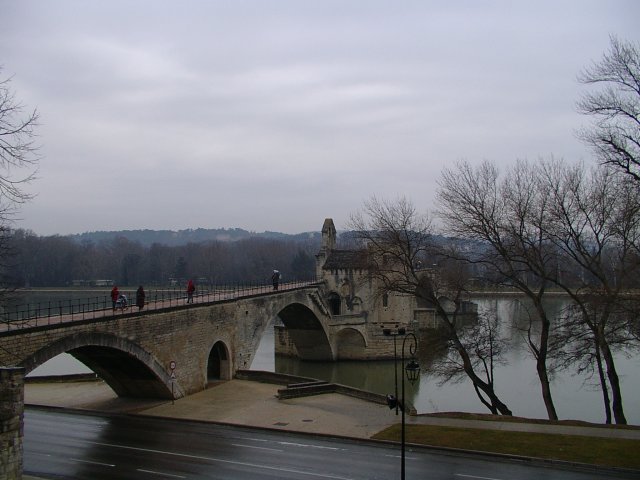
|
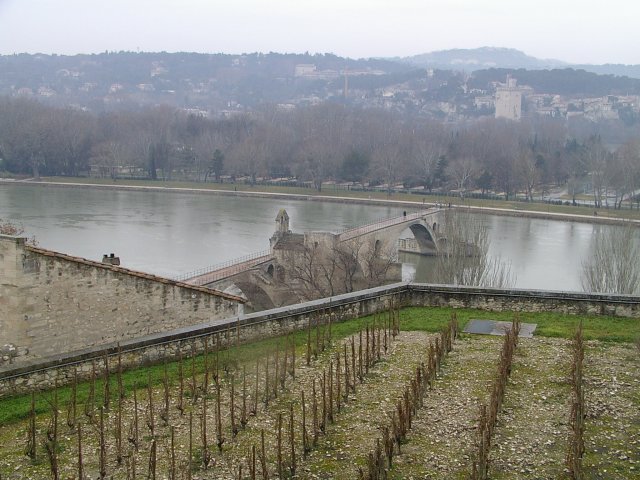
|
|
The next morning we were pretty lucky as a nice sunny day was awaiting us while we headed for the Camargue, a natural resort along the Rhone delta and the Mediterranean. We were driving along huge marshes, lagoons, and fields of bulls, pelicans and the typical white horses. It was a magnificent sight! The first stop was in Ste. Marie de la Mer, which is the capital of the Camargue. The city is famous for all the gypsies to gather once a year in honor of their patron, Ste. Marie. Today, the village offers many restaurants, souvenir shops and horsestables for the many tourists that stop by especially during summer. After exploring the sites, we continued our way looking for an opportunity to go horseback riding. After some searching we found a very nice couple who rode along with us and showed us the typical landscape of the Camargue. Along the ride, we saw fields with bulls, wild horses, and marshs. It was a very beautiful and relaxing adventure! |
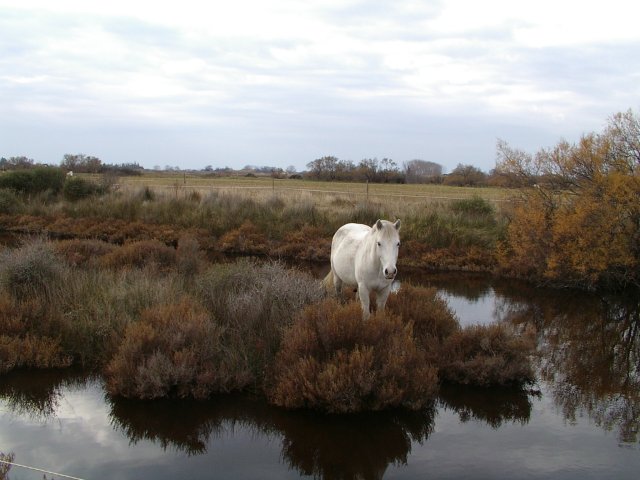
|
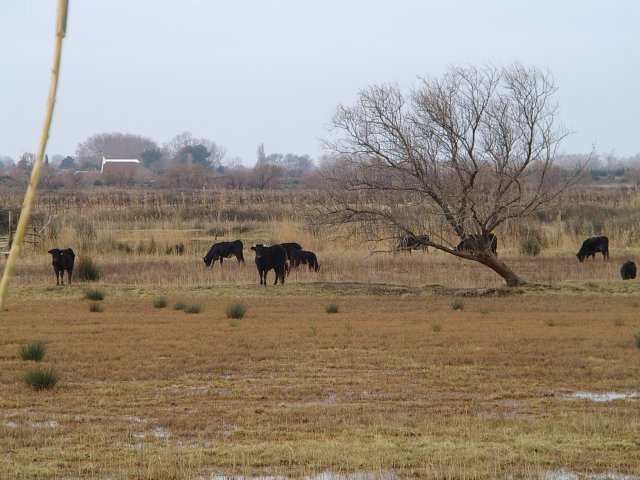
|
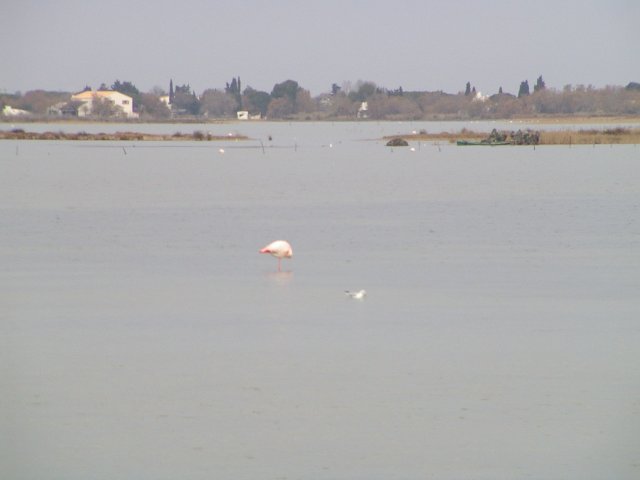
|
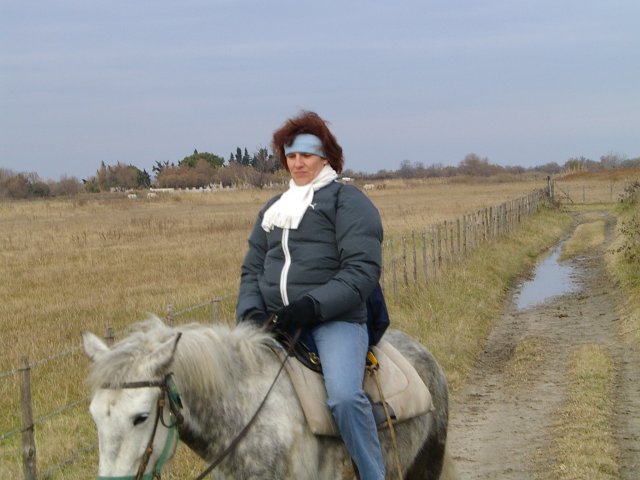
|
|
After lunch back in St. Marie de la Mer, we continued our way to Les Baux. Les Baux is another spectacular site: a ruin of a former castle is proudly sitting on top of a cliff and the village itself is built below the ruins. From top of the castle you can see a landscape similar to the Tuscany of the one side and a very harsh and rocky area on the other side. After checking out all the sites we shopped along the souvenir shops in the village and then headed back to our hotel in Arles. Early the next morning we left Arles and drove back to Toulouse where Neil went back to work. |
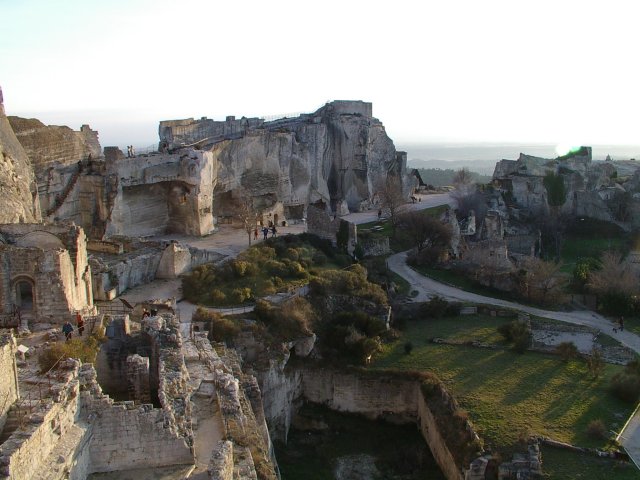
|
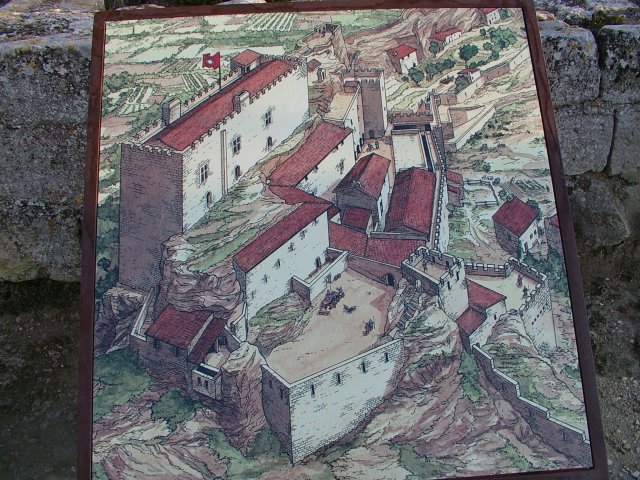
|
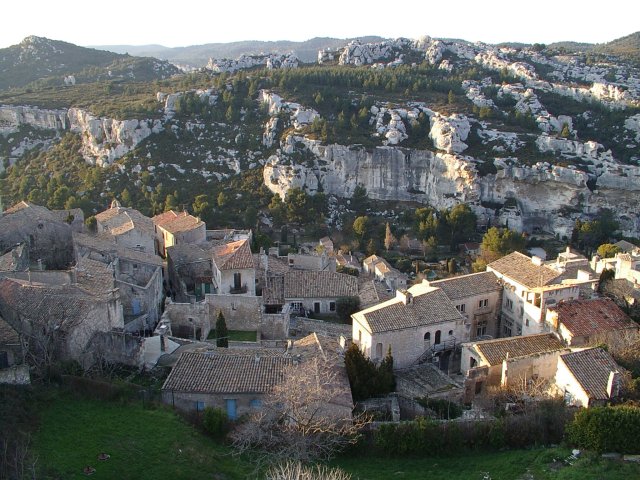
|
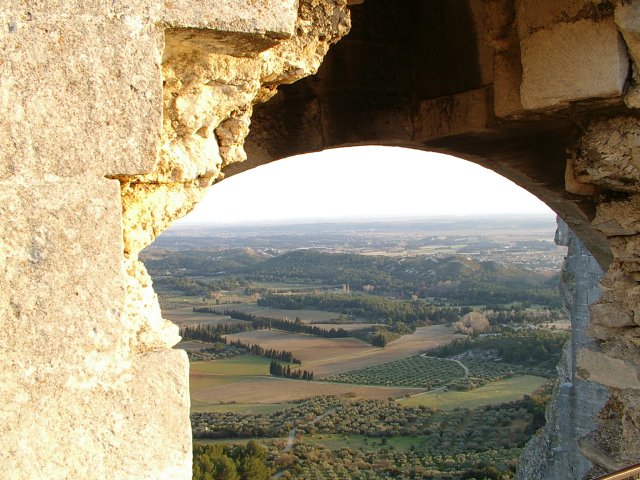
|
|
|
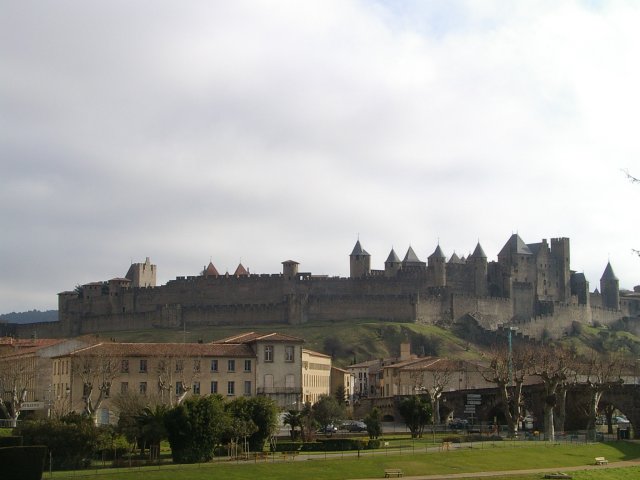
|
The city of Carcassone is basically divided in two different areas: the town itself and the area where the citadel, proudly sitting on a hill and called the "Cite", was built. So far, we have only seen this magical sight of this citadel from the freeway and it always took our breath away. Also this time, we were quite stunned by its view: even though it was a cold and windy day, the citadel was shining in the sun and looked more impressing than ever. The citadel consists of two walls in order to protect the inhabitants from unwelcome visitors and inside you will find a castle, a cathedral, several smaller churches, and a prison. Some walls had been built in the 4th century and the two main walls have been finished in the 13th century. |
|
Once we were inside the citadel and able to have a closer look at the architecture, we were even more amazed: the outside wall is about 15 feet wide and has a total of 16 towers to lookout for any enemies. But even if enemies were to enter through that wall, they would then have to face some more obstacles: Within a distance of about 50 feet, another wall with even more towers (24!) is offering the ultimate protection. This inside wall also offers small openings so that the guards can peek outside and if necessary shoot any weapons at enemies. |
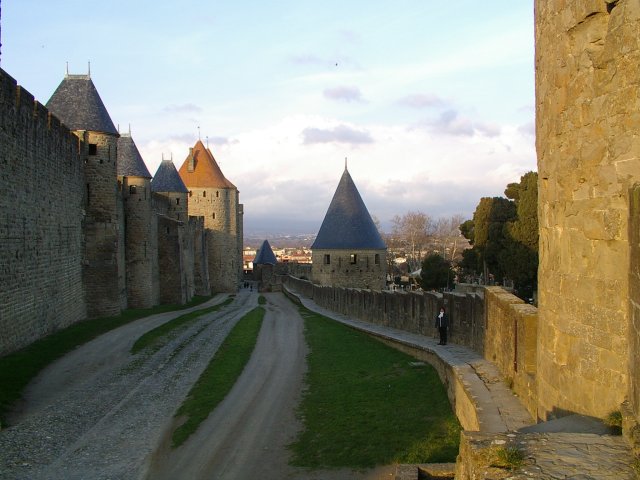
|
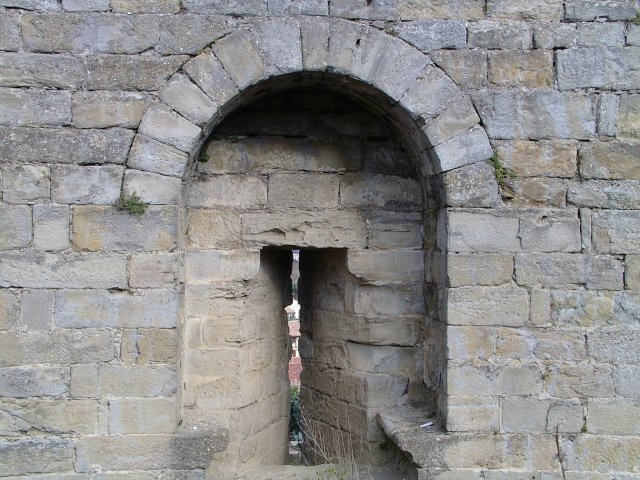
|

|
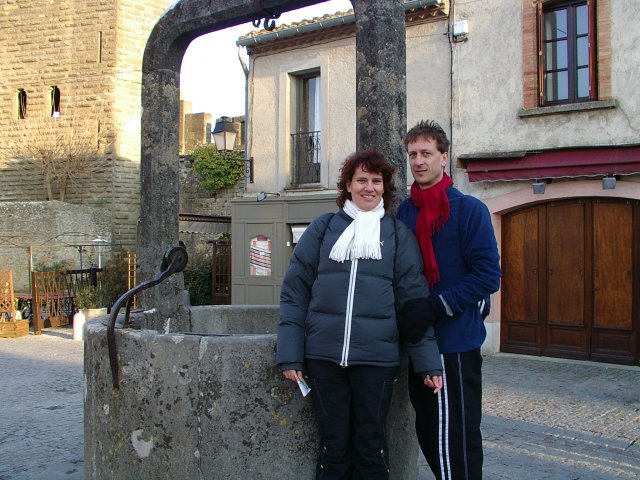
|

|
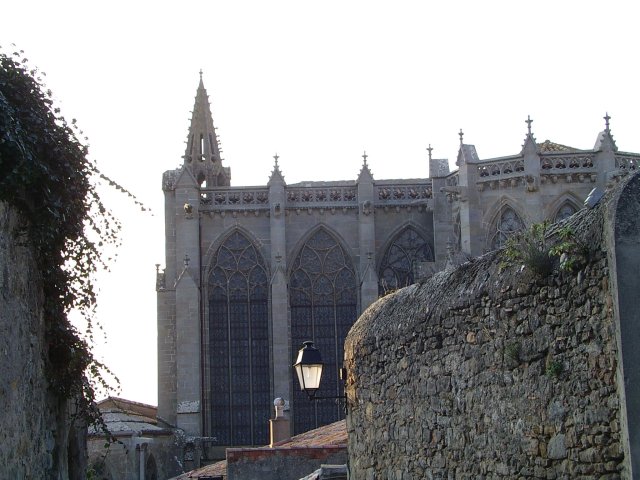
|
|
The real gems inside are the Basilica of St. Nazaire: the gothic outside is richly decorated with gargoyles and balustrades. The inside is blessed with the most wonderful stained-glass windows in the choir and an amazing organ. |
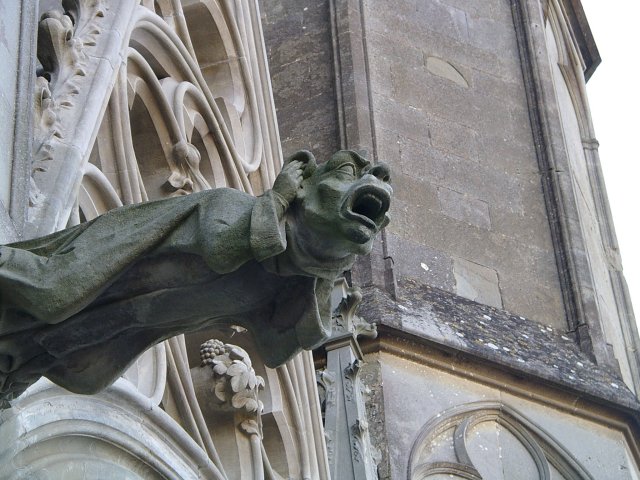
|
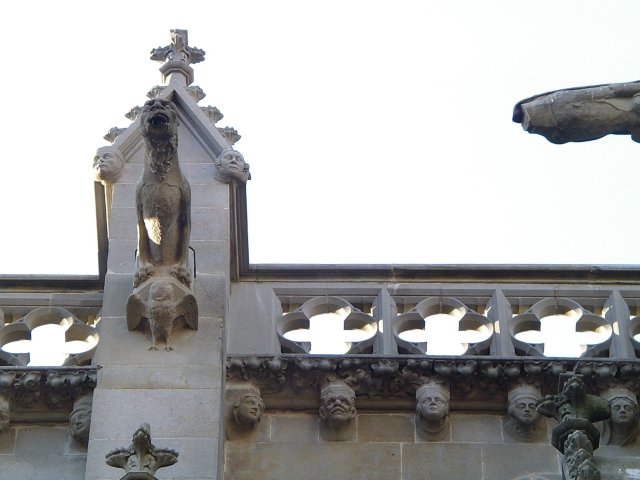
|
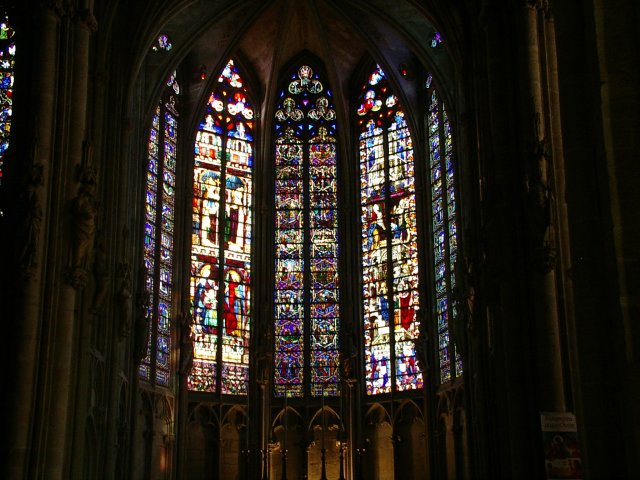
|
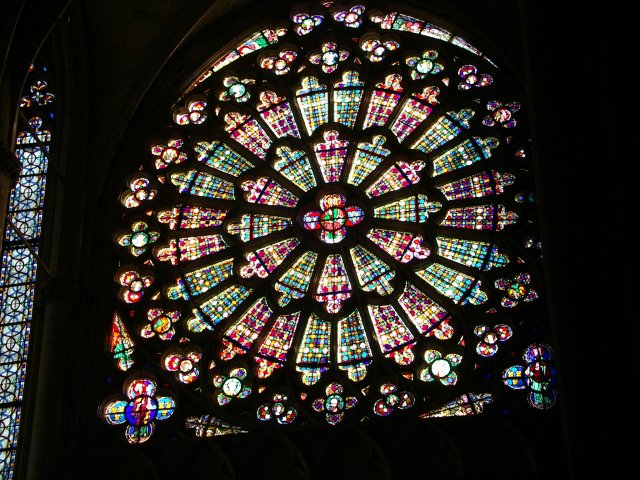
|
|
Today, some of the ancient buildings have been turned into hotels, restaurants, souvenir shops and even an archaeological museum. The castle however is still kept in its original style and can be visited. |
|
|
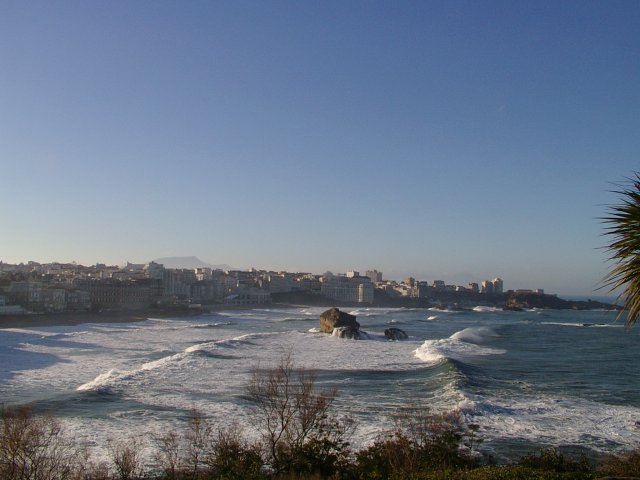
|
Biarritz is a very chic coastal town by the Atlantic ocean, close to the Spanish border. It first became popular in the mid-19th century when Napoleon III and his Spanish wife Eugenie visited regularly. The many lavish hotels along the coastline are proof of these glory days. Today, Biarritz is famous for its beaches and some of the best surfing in Europe. During summer, the beaches are quite overloaded by tourists and surfers, but during our winter visit, the only other visitors we came across were the fans of the Rugby Eurocup! |
|
The town doesn't have too many sightseeing wonders to offer, which was a nice break for us from all the other cities we had visited. It was nice to simply stroll along the boardwalk and take in the ocean breeze, and to admire the rough coast and ocean. The town itself had a strong architectual influence from the Basque: all the houses had colorful accents in form of either green, red or blue shutters. Also the cuisine is quite different and can be best described as a mixture of French and Spanish cooking. |
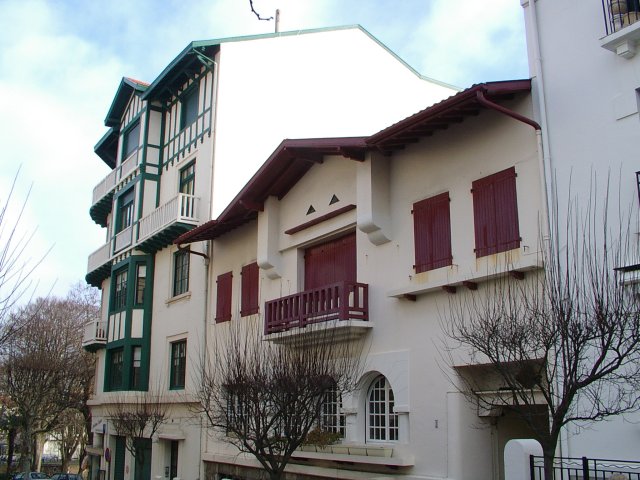
|
|
The first day, we arrived in the early afternoon and immediately headed for the ocean. The closest access brought us to a steep coast that can best be compared to Laguna Beach. A labyrinth of stairs and walkways were leading to the bottom and the boardwalk by the ocean. It was also quite impressive how many houses were built dangerously hanging over the cliffs. During our excursion of Biarritz, we also checked out the old town area and found a cute restaurant where we had a local meal. |
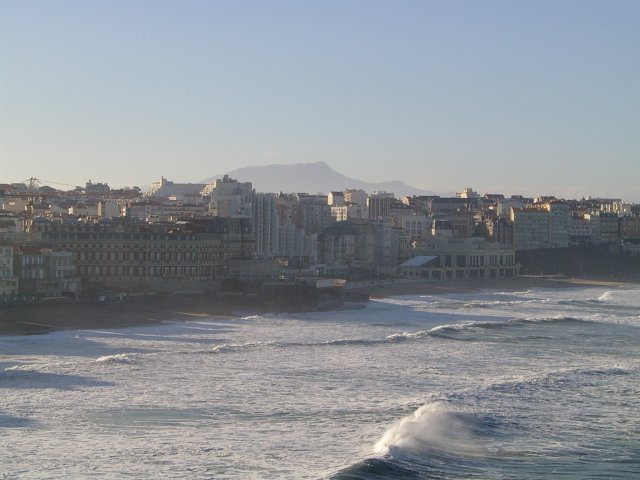
|
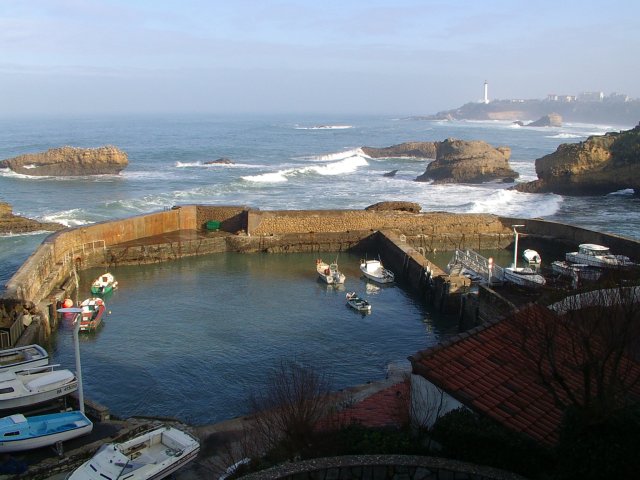
|
|
The next day we headed for the main beach and watched the few surfers elegantly gliding over the rough waves! The boardwalk along the coast was nice and picturesque: one end of Biarritz was marked with a lighthouse on top of a hill, there was an old and gorgeous harbor with fishing boats, and a Madonna was proudly sitting on one of the many rocks overlooking the ocean. |
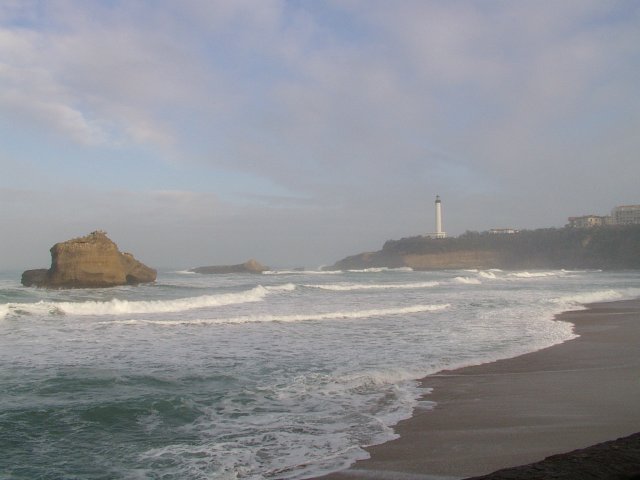
|
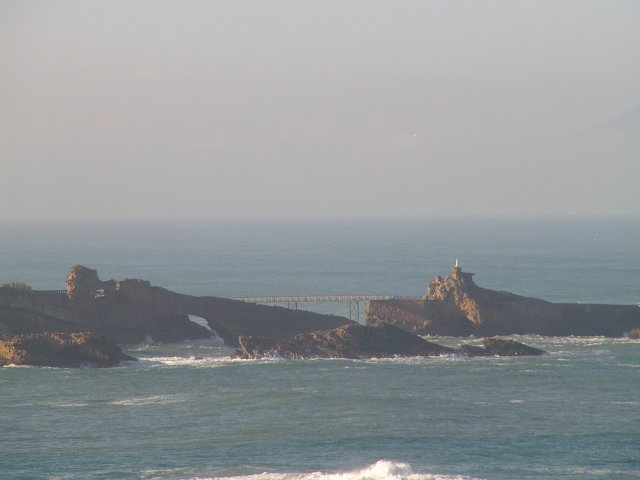
|
|
Biarritz had one downfall however, as it was too hilly and not ideal for rollerblading; therefore, we went to the next beach town on Sunday and did a nice loop along the various bike paths. After lunch we strolled along the beach and admired the dunes and the beautiful landscape. Even though the sun was shining it was still crispy cold! Even though there was a nice Volleyball court on the beach, neither one of us was in the mood to take the shoes off and practice any Volleyball!!! When we left Biarritz early Monday morning, it was another beautiful and clear day but the temperatures were again around the freezing point. But on our drive back to Toulouse we got a real treat: we were finally able to see the Pyrenees and they were as beautiful as they could be, covered with snow and shining in the sun. Closeby, a monument in honor of the bicyclists from the Tour de France had been established; each year, the route passes through this area. |
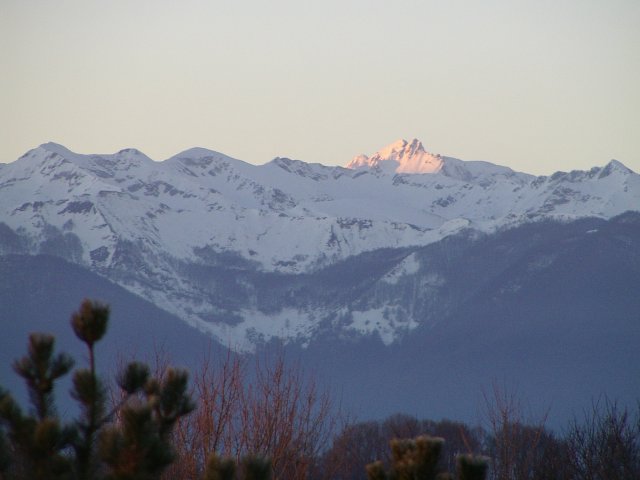
|
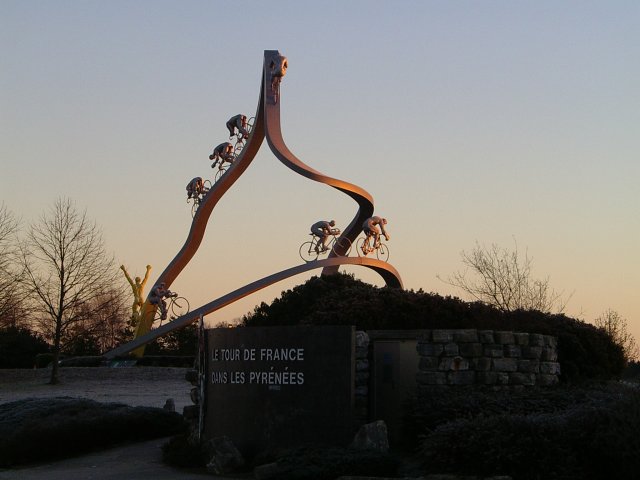
|
|
|
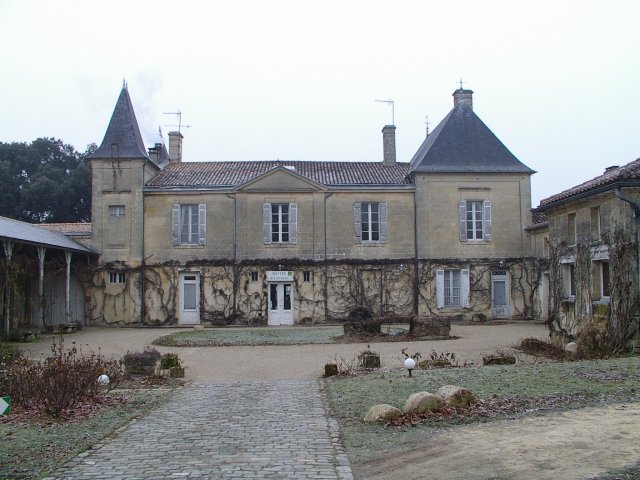
|
The next weekend, we were finally heading for Bordeaux and its wine area. And we had another one of our dreams come true: we wanted to stay in one of the old castles and feel what life used to be for kings and queens! I found a nice castle outside of Bordeaux that had been in the same family for many years. Finally, the current owner decided to turn it into a hotel and restaurant in order to finance the expensive upkeeping. Once again, we left Friday after work and the drive to this castle turned out to be quite long and lead us through the darkest and smallest roads. We finally arrived at our destination at night and it was more magical and romantic than we had expected! The owners had done a magnificent job in renovating the old castle while leaving the antique touch and adding modern comfort. We liked our castle a lot and enjoyed our stay there! |
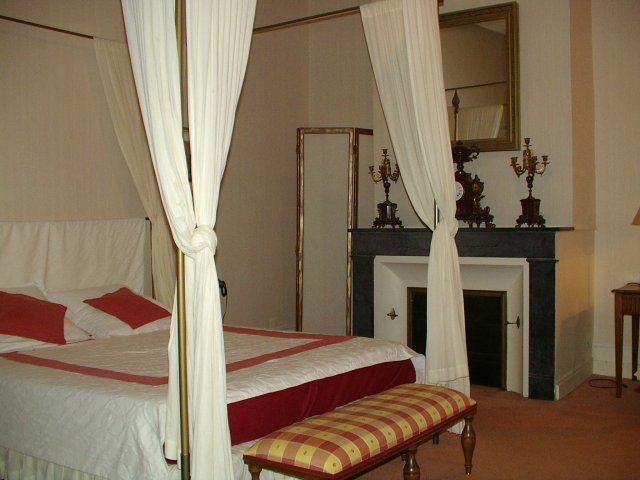
|
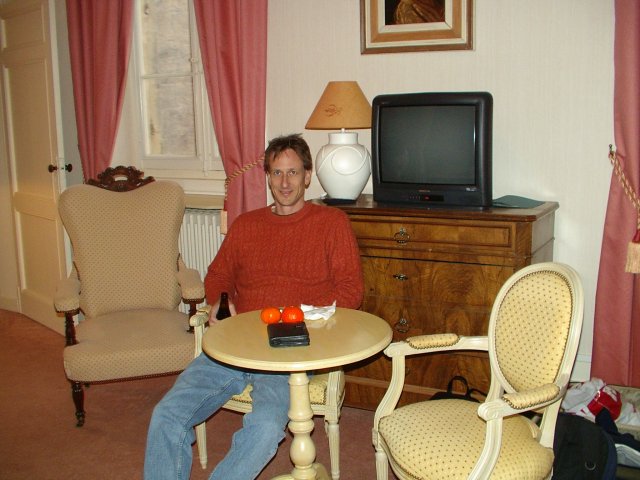
|
|
The next day, we visited the closeby village of St. Emilion, a very unusual and ancient place. The town got its name after a monk called Emilion who took refuge as a hermit in a cave in this city during several years in the 8th century, trying to escape from all the pilgrims who followed him after he had performed miracles in a different city. Still today, one can visit the cave of St. Emilion as well as a monolithic church that had been built in the 11th century. The amazing fact about St. Emilion is that no new buildings have been added; all the architecture is ancient and gives a very unique look to this city. It is not surprising that St. Emilion and its vicinity are put under UNESCO world heritage. |
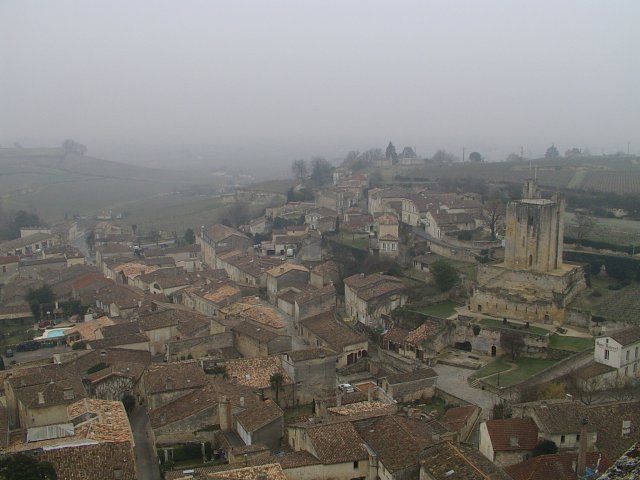
|
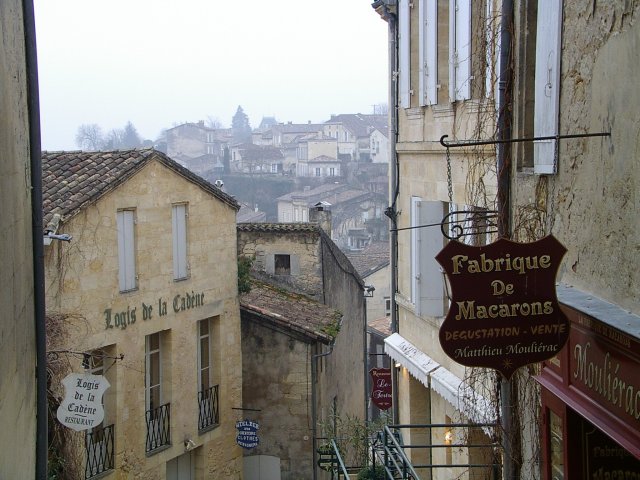
|
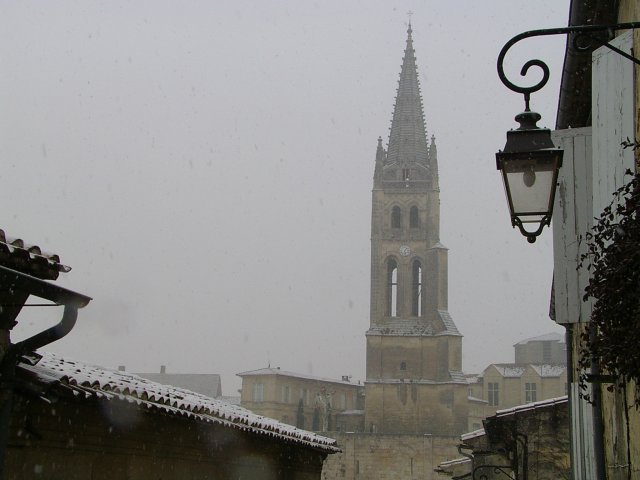
|
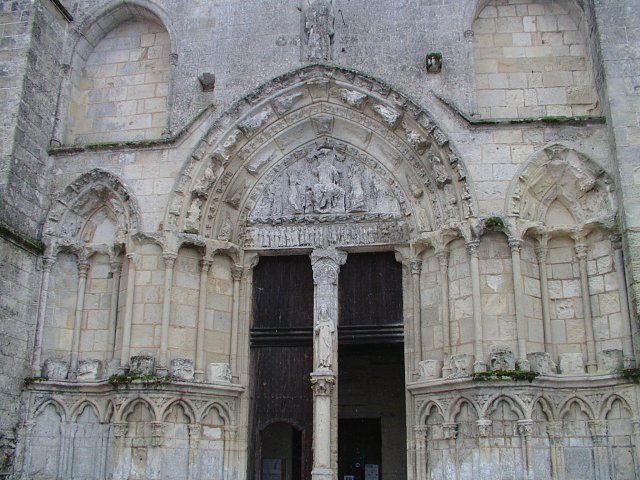
|
|
But St. Emilion is not only famous for its history; it is also an area famous for its very fine wines. Several wine cellars and wine bars available in town allow the visitors to taste the local favorites. During our visit we tood advantage of taking a wine class in one of the wine bars, learning about the different territories around Bordeaux and learning more about the different tastes in wines. We were actually glad to be able to sit inside a warm room as it had started to snow quite a bit that day and within a short time the houses had a nice layer of snow sitting on their roofs! |
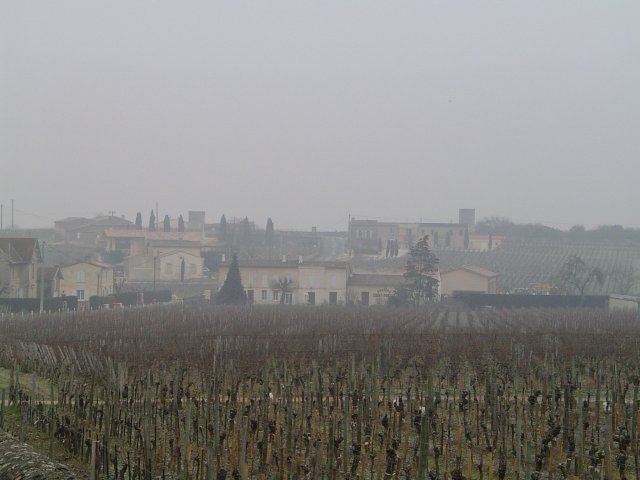
|
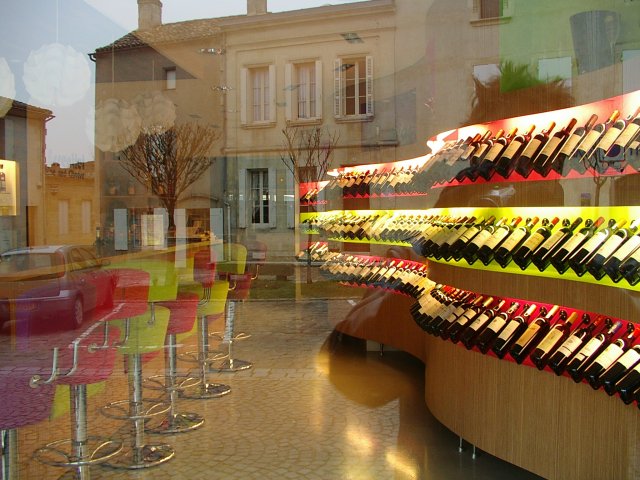
|
|
The next day we visited Bordeaux, which was a huge contrast to St. Emilion: Bordeaux is quite a large city with many sightseeing attractions and shopping opportunities, but we still preferred the small-town ambience of St. Emilion. From the Tourist Office we had received a nice map and walking tour around Bordeaux to see the main attractions; however, it was another day that the weather didn't play along and after we were hit by some freezing snow storms, the afternoon brought lots of rain until we were soaking wet and gave up on the rest of the sightseeing tour! We just wanted to go back to the castle and get out of our wet clothes!!! |
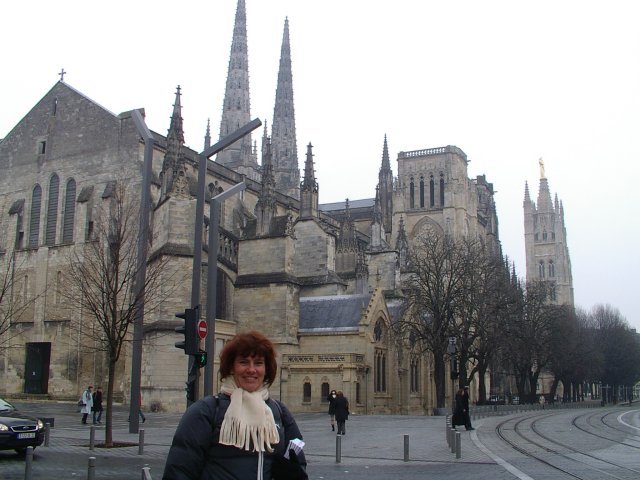
|
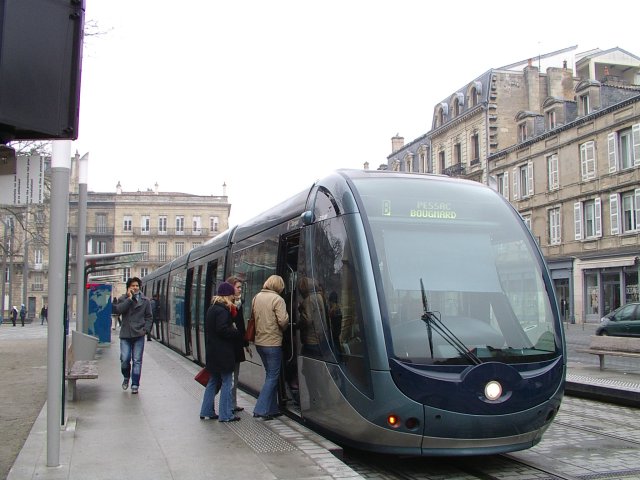
|
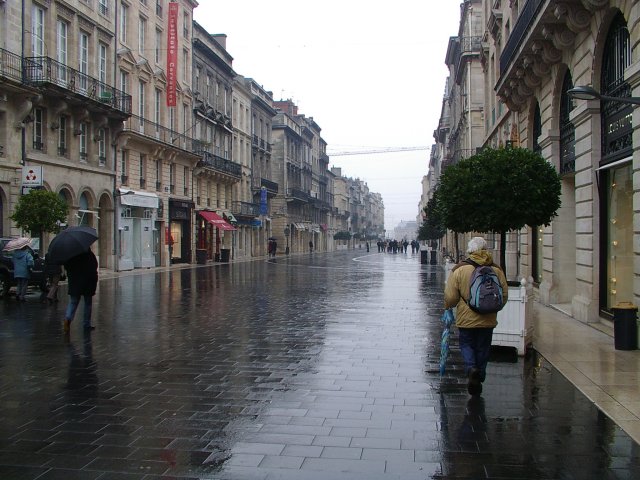
|
More weekend trips